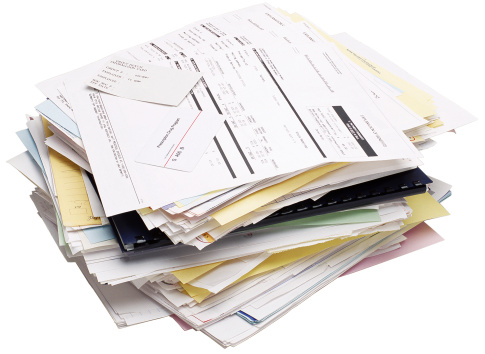Soon after a doctor’s visit, emergency room visit, surgery or hospitalization, your mailbox is filled with medical bills. There are bills from the hospital, doctor’s office, laboratory, radiologist, attending physician, consulting physicians, surgeon, anesthesiologist, respiratory therapist, pharmacist, physical therapist… and on and on.
Each of the medical bills that pile up on your kitchen table is a “summary” billing statement from a single team that assisted you during your office visit or hospitalization. Ideally, you would have actually seen a member of each healthcare team that is billing you; but in reality, a lot happens behinds the scenes in a healthcare setting. Invisible nurses, doctors, technicians, pharmacists, and other integral healthcare team members are the “hands and feet” of providing what you need, such as bringing medication to the floor, delivering lab samples, taking your vitals, and changing the sheets on your hospital bed.
With a diverse team – many of whom you never see – providing you with healthcare services, the potential for a billing error is high. Blindly paying your healthcare bills without investigating them often results in overpaying or in paying bills for which you never received service.
Know your bills. Before you can review your medical bills for errors, you need to know what you are looking at. You will receive at least two types of bills associated with a specific medical visit or hospitalization:
- An actual medical bill from the doctor’s office, hospital, and/or associated providers for the visit
- An explanation of benefits from your insurance company
Review the explanation of benefits (EOB). The EOB tells you what your insurance company will pay as it relates to a medical bill. Insurance companies will include varying information in the EOB. At a minimum, the insurance company should include the following information:
- Provider Description
- Date of Service
- Total Charges
- Provider Discount
- Excluded Charges
- Deductible
- Benefit Amount
- Percentage Paid At
- Amount Paid by Plan
- Provider Paid Amount
- Amount You May Owe the Provider
There will also be claim remarks on the EOB. Examples of claim remarks include:
- “Services rendered by network provider are within contractual agreement.”
- “Physical therapy, speech therapy and occupational therapy are not covered.”
Compare the EOB with your medical bill. Your EOB will state the amount billed by the healthcare provider(s). The EOB will also state how much your insurance has paid and what is not covered. If your medical bill does not match the EOB, this is your first indication that there may be a medical billing error.
Request an itemized bill. Approximately 30% of medical bills contain an error. As soon as you receive your first medical bill, call the billing department and request an itemized bill. Along with per-item charges, two types of billing codes will appear on the bill:
- ICD Codes: A numerical code for your illness(es) and diagnosis.
- CPT Codes: A five-digit numerical code for each billing procedure.
Request additional documentation. Ask the billing department for copies of all documents to confirm your diagnosis (ICD9) and all procedures (CPT) performed during your visit.
Once you have detailed copies of all documents, review your itemized medical bill to identify billing errors.
- Were you charged for the correct procedure?
- Did you receive all medications listed on the itemized bill?
- Is the number of days you were in the hospital listed accurately?
- Did you receive the physical therapy, speech therapy, respiratory therapy, counseling, psychiatric assessment, or any specialty consultation listed?
Call the healthcare provider. Discuss your bill, and ask specific questions about any discrepancies you see in the documentation you have received.
Document your efforts. Keep a detailed record of your efforts to ensure the accuracy of your medical bill. At a minimum, this record should document:
- The date and time of each call
- The name and position of each person you speak to
- Specific details of each discussion
- Actions each person will take to assist you with your medical bill
If you become frustrated with contacting the medical billing department via telephone, you can also write a letter. All written letters should be sent via certified mail, with a return receipt requested. Retain all receipts from your mailings, and file them with a copy of your letter. You will need the receipts and copies of correspondence to negotiate your medical bill later.
Remember: Do not pay the “full amount due” on any medical bill when it arrives in your mailbox. Medical bills are negotiable – just like buying a car. You only need to learn how to negotiate your medical bill.


Recent Comments